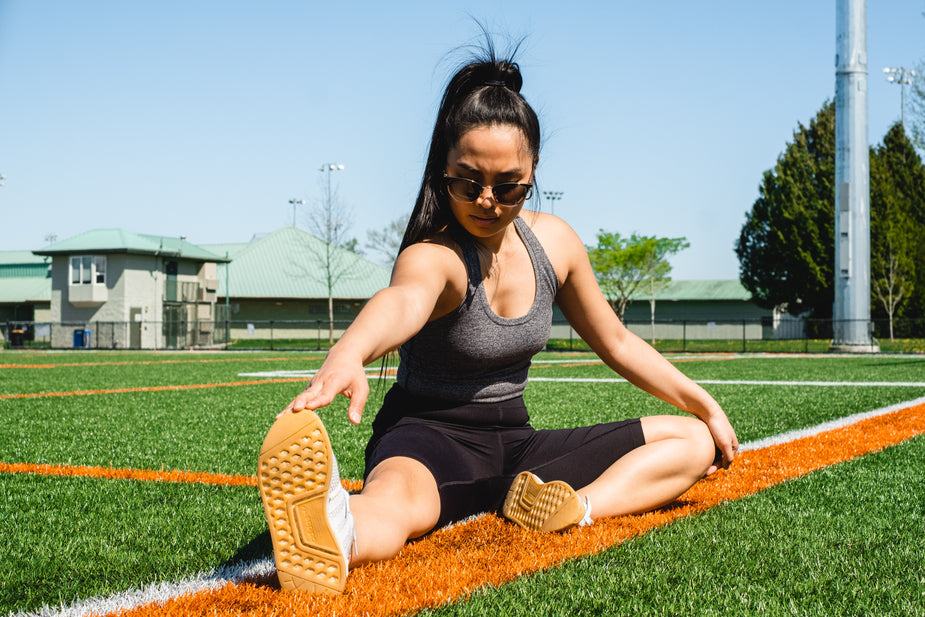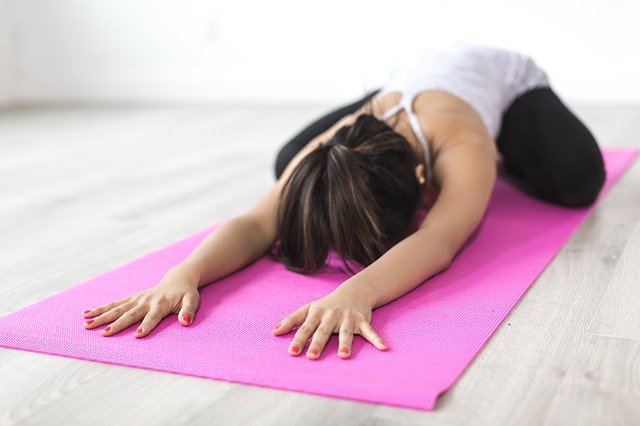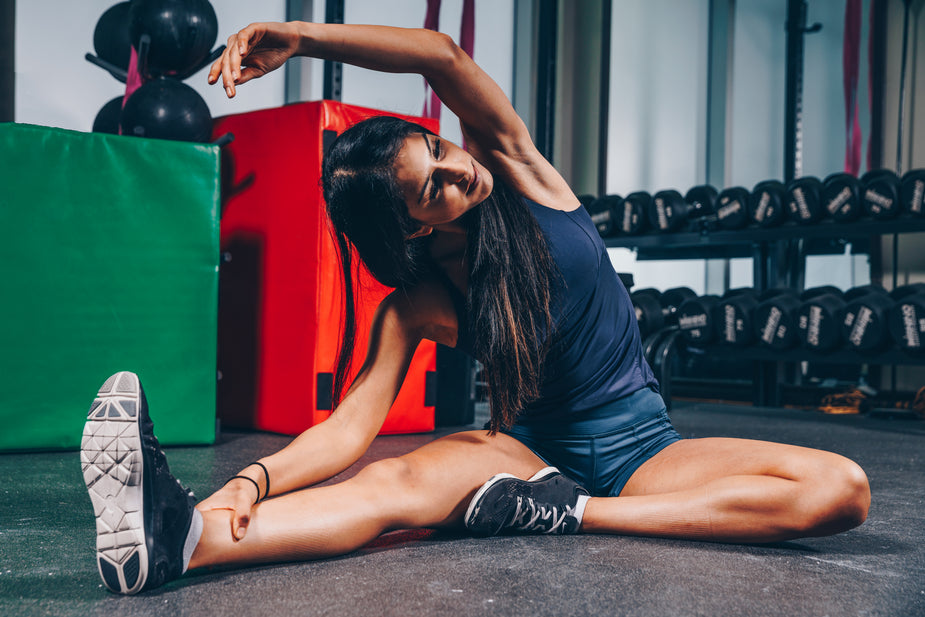A dynamic stretching routine is one of the most overlooked healthy lifestyle factors. Many people do not even realize the importance of stretching, let alone know how to stretch correctly. It is estimated that only 11% of the general population stretches regularly, and the number gets even lower when you consider physically active people.
Thankfully, a stretching routine does not have to be complicated or time-consuming. All you really need is a few minutes each day to improve your flexibility, range of motion, and overall health.
If you’re looking to add some crucial minutes of stretching to your day, look no further. This guide will introduce you to dynamic stretching basics, including the different types of stretches and how to get started with a dynamic stretching routine.
Table of Contents
What is Dynamic Stretching?

Dynamic stretching uses movement to lengthen muscles. You move the body or a limb through a complete range of motion, such as swinging the arms back and forth or performing a lunge with a twist. Dynamic stretching is often used as part of a warm-up before exercise, as it helps to increase blood flow and prepare the muscles for activity. Unlike static stretching, typically done after training, dynamic stretching does not involve holding the stretch for an extended period. This makes it ideal for people looking for an active way to improve their flexibility. In addition to its benefits for flexibility, dynamic stretching can also help to improve coordination and balance. For these reasons, it is an excellent choice for athletes and non-athletes.
Dynamic vs. Static Stretching – What’s the Difference?

While dynamic and static stretching both have their place, it is essential to understand the difference between the two. Static stretching involves holding a stretch for an extended period of time, usually 20-30 seconds. This type of stretching is typically done after exercise as a way to cool down and increase the range of motion. On the other hand, dynamic stretching uses movement to lengthen the muscles and does not involve holding the stretch. As mentioned, dynamic stretching is often used as part of a warm-up before exercise.
Dynamic vs. Static Stretching – Which is Better?
The answer to this question depends on your goals. Dynamic and static stretching can both be beneficial if you want to improve your flexibility. However, dynamic stretching is generally the better choice if you are trying to increase your range of motion or prepare for physical activity. This is because dynamic stretches help to increase blood flow and prepare the muscles for action. Static stretches are more likely to cause injuries if done before exercise. So, dynamic stretching is the way to go if you want to improve your flexibility and prepare for physical activity.
When to use Dynamic Stretching
Dynamic stretching is a great way to warm up your muscles before a workout. It involves moving your body through a full range of motion and can help to improve your flexibility and range of motion. Dynamic stretches can also help to reduce the risk of injury and can be a great way to get your heart rate up before a more intense workout. In general, dynamic stretches are best used as part of a warm-up, while static stretches are better used after a workout when your muscles are already warm.
- Before a Sport or an Excercise: One can typically do dynamic stretching before any type of physical activity. It is a great way to warm up your muscles and prepare them for action.
- Before Weightlifting: Weightlifting is a type of exercise that requires you to move your body through a full range of motion. Dynamic stretching can help to increase your range of motion and improve your flexibility.
- Before a Run or Cardio: Running and other forms of cardio are high-impact activities that can be tough on your muscles. Dynamic stretching can help to reduce the risk of injury and improve your range of motion.
5 Dynamic Stretches for Warming Up

If you’re wondering what’s the best way to start your dynamic stretching routine, here are five great dynamic stretches to get you started.
Hip Circles
Hip circles are a great way to stretch your hips dynamically.
- To do them, start by standing with your feet shoulder-width apart and your arms at your sides. From there, lift your right leg and swing it in a wide circle around your body.
- As you do so, be sure to keep your hips level and resist the urge to arch your back.
- After 10-15 reps, switch legs and repeat the exercise.
Hip circles are an excellent way to loosen up your hips and prepare them for activity. They can also help improve your range of motion and reduce the risk of injury.
Lunge Twist
The lunge twist is a great way to stretch your hips, legs, and low back.
- To do the lunge twist, start in a lunge position with your right leg forward and your left leg back.
- Next, twist your torso to the right and reach your right arm up overhead.
- Hold the stretch momentarily, then repeat on the other side.
You should feel a deep stretch in your hips and legs. The lunge twist is a great way to warm up your muscles or cool down after exercise. It’s also a great way to eliminate tightness in your hips, legs, and low back. Try doing the lunge twist daily to keep your muscles healthy and flexible.
Arm Circles
Arm circles are a great way to warm up your muscles and get your blood flowing. Here’s how to do them:
- Stand with your feet shoulder-width apart and your arms at your sides.
- Raise your arms out to the sides until they’re parallel with the ground, then start making small circles.
- As you get warmed up, you can make the circles larger.
- After 30 seconds or so, switch directions and circle your arms in the other direction.
- You can also try varying the speed of your circles.
Walking High Knee
High Knee is a common and effective dynamic stretch. The movement helps to loosen the hip flexors, which can become tight from sitting for long periods of time. It also strengthens the quadriceps and glutes, essential for stabilizing the hips during walking and running.
- To do a High Knee, stand with your feet hip-width apart and your hands on your hips.
- Lift your right knee as high as possible without arching your back, then drive your heel towards your buttock.
- Return to the starting position and repeat with the left leg.
- Do 10-12 repetitions on each side.
You can also add a hamstring curl by bending your knee and bringing your heel towards your buttock as you lift your leg.
Trunk Rotation
As anyone who has ever done a workout can attest, stretching is an integral part of any exercise routine. Not only does it help to warm up the muscles, but it also helps to prevent injuries. Various stretching exercises can be beneficial, but one of the most effective is trunk rotation. This dynamic stretch helps to loosen up the muscles in the back and shoulders, and it also helps to improve the range of motion.
- To do the exercise, start by standing with your feet shoulder-width apart.
- Then, place your hands on your hips and rotate your torso to the right.
- Return to the starting position and repeat the movement to the left.
- Do 10-15 rotations in each direction.
Trunk rotation is a simple exercise that can significantly impact your workout routine. Give it a try next time you hit the gym!
Dynamic Stretches for Runners

Leg Swings (Side)
Side leg swings are a great dynamic stretch for your hips, glutes, and hamstrings. They can also help to improve your balance and coordination.
- To do a side leg swing, start by standing on one leg. Hold onto a steady object for support if needed. Swing your other leg out to the side, keeping your knee straight.
- Swing your leg as high as you can without losing your balance.
- Reverse the direction and repeat.
- Do 10-12 repetitions on each side.
You can also add a small hop to the movement to make it more challenging. Side leg swings are a great way to warm up your muscles before a run.
Leg Swings (Front)
- Start by standing tall with your feet shoulder-width apart and your hands on your hips.
- Then, swing one leg forward and backward, keeping your other leg straight.
- Continue swinging your leg for 10-20 seconds, then switch legs.
Remember to keep your core engaged throughout the entire movement to maintain balance.
Mountain Climbers
Mountain climbers are a great way to get your heart rate up and your muscles warm while doing a dynamic stretching routine.
- First, start in a push-up position with your feet together.
- Next, bring your right knee towards your chest and then back to starting position—alternate legs. As you become more comfortable with the movement, increase the speed.
- You can also add a jump at the movement’s top for an extra challenge.
Mountain climbers not only get your blood flowing, but they also help to improve your flexibility and range of motion. In addition, they strengthen your core, arms, and legs. So mountain climbers are a great choice if you’re looking for a total body workout. Just be sure to start slowly and listen to your body to avoid injury.
Donkey Kicks
Donkey kicks are a great way to dynamic stretch your muscles before a run. The movement helps lengthen the muscles in the back of your legs, spine, and back.
- To do a donkey kick, start by getting down on all fours. Ensure your hands are under your shoulders and your knees are under your hips.
- Keeping your abs engaged, lift your right leg up behind you, keeping your knee bent. Use your left hand to grab hold of your right ankle and pull it towards you as you kick back. You should feel a gentle stretch in the back of your leg and spine.
- Repeat on the other side.
Always warm up before stretching, and don’t push yourself too hard. Listen to your body and stop if you feel any pain.
Dynamic Stretching FAQs
Are Dynamic Stretches Safe?
Yes, dynamic stretches are safe when performed correctly. However, it’s essential to warm up before stretching to avoid injury.
When is the Best Time to Perform a Dynamic Stretch?
Dynamic stretches are typically performed as part of a warm-up routine. However, they can also be done after a workout to help your muscles recover.
How Often Should you Perform a Dynamic Stretch?
How often you perform a dynamic stretch will depend on your fitness goals and schedule. For example, if you’re looking to improve your flexibility, you may want to stretch daily. However, if you’re just looking to maintain your current level of flexibility, stretching a few times a week should suffice.
Are Dynamic Stretches Important?
Yes, dynamic stretches are an essential part of a well-rounded fitness routine. They help to improve flexibility, range of motion, and overall athletic performance.
Does Dynamic Stretching Work?
Yes, dynamic stretching is an effective way to improve flexibility and range of motion. It can also help to reduce the risk of injury.

